Sparkling with colorful glitter, the small glassware shop in the Czech mountains lights up a grim, foggy day, as Christmas shoppers stream in to the constant chime of the doorbell.
They come to buy blown-glass beaded decorations including stars, angels, snowmen, Santa Clauses or cribs made by a small company in Ponikla, a village in the northern Czech Republic.
The “handmade production of Christmas tree decorations from blown glass beads” earned a place on the UNESCO list of intangible cultural heritage last year.
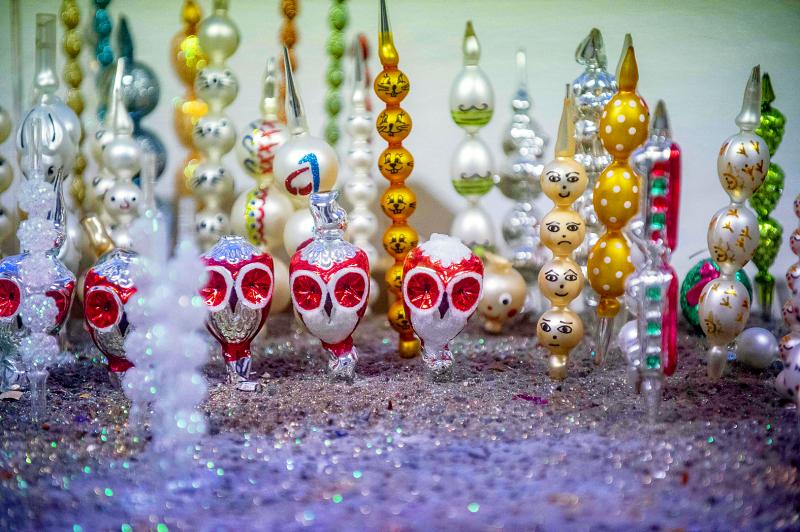
Photo: AFP
The practice has survived until today only in Ponikla, whose local tradition has roots in a 19th-century love affair.
“A certain Mr Hajna fell in love with a local maid, they got married and he brought the very basics of the craft to Ponikla,” says Marek Kulhavy, owner of the local Rautis factory, the only one left. Hajna came from a nearby region where glass making had already flourished, and the craft spread fast as his neighbors were quick to learn it to make their living in the poor mountainous region.
Stanislav Horna opened the current Rautis factory in 1902 to produce fancy trimmings for clothes and costumes and met with great success, employing as many as 200 glass blowers at one point. The company managed to stay afloat even after an act of espionage forced it to redirect its focus to Christmas ornaments.
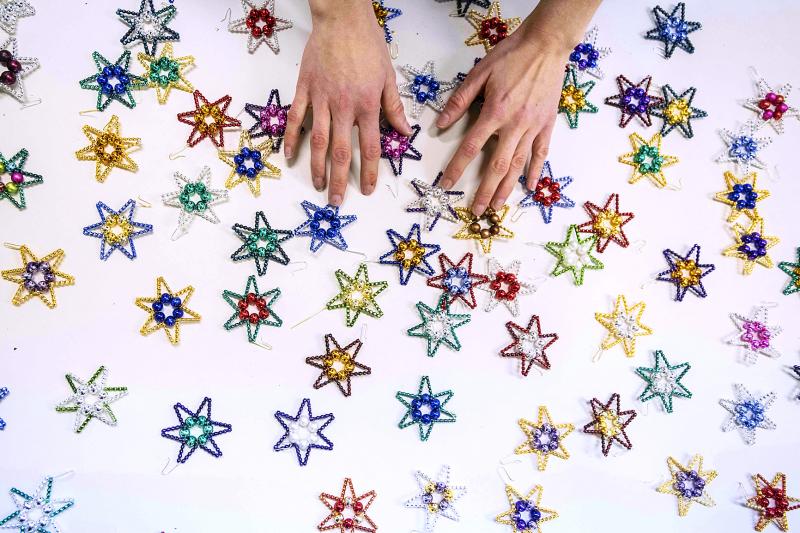
Photo: AFP
“In the 1920s, a group of Japanese industrial spies disguised as tourists copied the process and started to produce the trimmings, taking the eastern markets away,” Kulhavy said.
“The warehouses were full of beads and somebody decided to start making Christmas decorations as Christmas trees were a hit at the time.”
‘BLESSING IN DISGUISE’
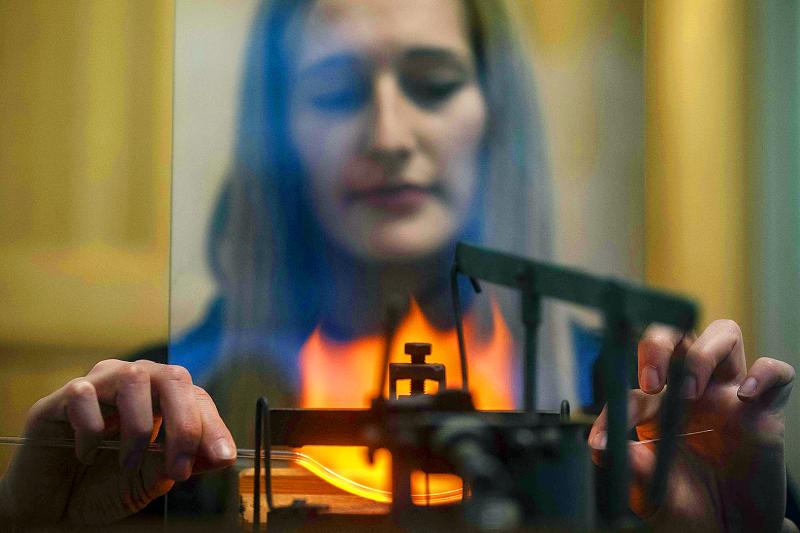
Photo: AFP
In 1948, all of the glass factories were nationalized as the Communists took power in the former Czechoslovakia, and Horna’s son was even thrown into prison like many entrepreneurs.
But the business benefited from the move as the Communists limited blown-glass bead manufacturing to Ponikla.
“It was a blessing in disguise,” says Kulhavy. “Glass beads were always on the fringe [of glass production] and they lived their own life even during Communism as nobody was really interested in them and so the business survived.”
Shortly after the Communist regime was toppled in 1989, Kulhavy’s father bought the Ponikla factory which currently employs 50 people.
Production begins with a glass pipe which is heated and shaped by blowing inside a mold. The plant has more than 1,000 patterns, according to Kulhavy.
The shaped pipe is silvered from inside with a solution and then dyed from outside, before being cut up, threaded with strings and turned into an ornament.
“Some beads are also treated by a painter. For instance angel heads need painted details,” said Kulhavy.
JURASSIC PARK
The Czech market is crucial, but the Ponikla decorations also head to neighboring Austria and Germany and other European countries, as well as Japan and the US.
Facebook fan Iren Hellerova was excited to receive the parcel she ordered, calling the Christmas beads “beautiful.” She said the ornaments make for unique gifts as “no one else in the world has this!” Some beads still end up on regional costumes in the Czech Republic, Germany, the Baltics, the Balkan countries or Latin America. Standing in front of a rack with glass motorbikes, cars and spiders in cobwebs, Kulhavy said the company had about 300 products to offer.
“We once made Jurassic Park and Wild West collections to attract US buyers in the 1990s, they were pretty ugly,” he chuckled.
UNESCO listed the production as a “specialized and technically demanding” craft, hailing the factory for safeguarding the tradition as the sole survivor.
“Glass beads were always a Cinderella. They entered the spotlight thanks to the listing,” Kulhavy said.
“When you cast light on a star, it simply shines.”

Aug. 4 to Aug. 10 When Coca-Cola finally pushed its way into Taiwan’s market in 1968, it allegedly vowed to wipe out its major domestic rival Hey Song within five years. But Hey Song, which began as a manual operation in a family cow shed in 1925, had proven its resilience, surviving numerous setbacks — including the loss of autonomy and nearly all its assets due to the Japanese colonial government’s wartime economic policy. By the 1960s, Hey Song had risen to the top of Taiwan’s beverage industry. This success was driven not only by president Chang Wen-chi’s

Last week, on the heels of the recall election that turned out so badly for Taiwan, came the news that US President Donald Trump had blocked the transit of President William Lai (賴清德) through the US on his way to Latin America. A few days later the international media reported that in June a scheduled visit by Minister of National Defense Wellington Koo (顧立雄) for high level meetings was canceled by the US after China’s President Xi Jinping (習近平) asked Trump to curb US engagement with Taiwan during a June phone call. The cancellation of Lai’s transit was a gaudy
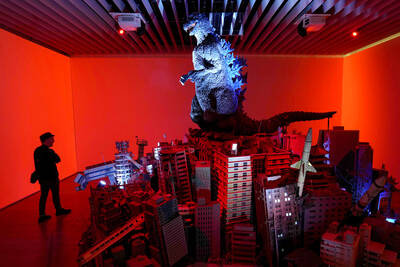
From Godzilla’s fiery atomic breath to post-apocalyptic anime and harrowing depictions of radiation sickness, the influence of the nuclear bombings of Hiroshima and Nagasaki runs deep in Japanese popular culture. In the 80 years since the World War II attacks, stories of destruction and mutation have been fused with fears around natural disasters and, more recently, the Fukushima crisis. Classic manga and anime series Astro Boy is called “Mighty Atom” in Japanese, while city-leveling explosions loom large in other titles such as Akira, Neon Genesis Evangelion and Attack on Titan. “Living through tremendous pain” and overcoming trauma is a recurrent theme in Japan’s
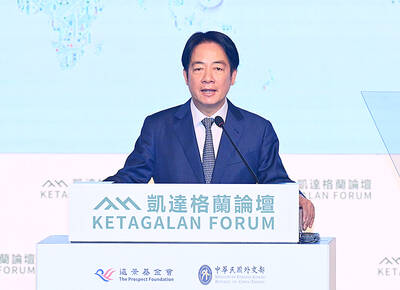
As last month dawned, the Democratic Progressive Party (DPP) was in a good position. The recall campaigns had strong momentum, polling showed many Chinese Nationalist Party (KMT) lawmakers at risk of recall and even the KMT was bracing for losing seats while facing a tsunami of voter fraud investigations. Polling pointed to some of the recalls being a lock for victory. Though in most districts the majority was against recalling their lawmaker, among voters “definitely” planning to vote, there were double-digit margins in favor of recall in at least five districts, with three districts near or above 20 percent in